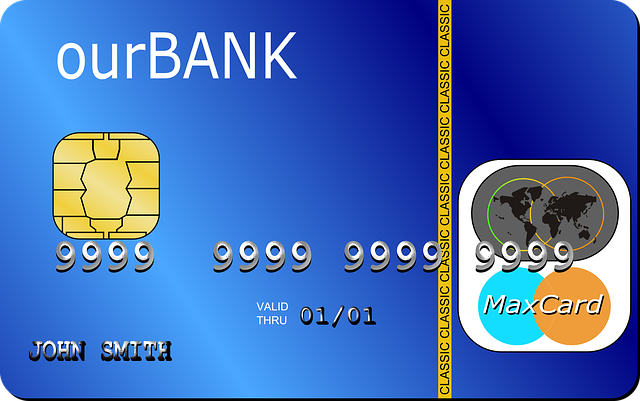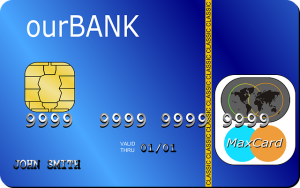
Why QuickBooks Isn’t Using Your Email Template (And How to Fix It)
 You don’t have to send generic-looking emails when using QuickBooks. By creating a template, you can customize the appearance of your emails. QuickBooks supports email templates. An email template is a design framework that serves as the basis for your emails. It will be applied to all of your emails, thus eliminating the need for generic-looking emails.
You don’t have to send generic-looking emails when using QuickBooks. By creating a template, you can customize the appearance of your emails. QuickBooks supports email templates. An email template is a design framework that serves as the basis for your emails. It will be applied to all of your emails, thus eliminating the need for generic-looking emails.
Email templates are available under the “Company Preferences” tab. You can create an email template by clicking the “Edit” menu in QuickBooks Desktop and choosing “Preferences.” Next, click the “Send forms” menu, followed by the “Company Preferences” tab. You should see an “Email Templates” menu. From this menu, choose a transaction type and select “Add template.” QuickBooks will then allow you to design a template. You can upload a logo, edit colors, reposition elements and more.
Even if you create an email template, though, certain problems may occur that prevent QuickBooks from using it. Rather than using the email template, QuickBooks will use the default, generic design.
Manually Copy and Paste
Syntax problems may prevent QuickBooks from using your email template. A simple solution is to manually copy and paste the email with your desired template. Pull up the email template by clicking “Edit,” followed by “Preferences.” After navigating to the “Company Preferences” tab, select the email template that you want to use and click “Edit.” Now you can copy the email.
With the email copied, click “File” and choose “Sen Forms.” Pasting the email should result in the message and template being transferred. Clicking “Send Now” will complete the process by sending the email. As long as you copied and pasted it, the email should feature your template.
Place It Back in Queue
Rather than manually copying and pasting, you can place the email back in queue. If QuickBooks isn’t using your template, it may have encountered a problem when attempting to send it.
To place the email back in queue, open the transaction with which the email is associated. Find the box labeled “Email Later” and click it to remove the checkmark. Next, click “Save & Close.” Go back and reopen the transaction and click the “Email Later” box so that the checkmark returns to it.
The transaction should be placed back in queue. QuickBooks will resend the email with your preferred template.
It’s fru
Did this tutorial work for you? Let us know in the comments section below!

How to Adjust Inventory Quantity in Quickbooks
 Do you need to adjust the quantity of your business’s inventory? QuickBooks Desktop will automatically track inventory quantities. When your business sells a product, the popular accounting software will lower the quantity for it. There are instances, though, in which you may need to manually inventory quantities. If a product is damaged, for instance, you’ll have to manually adjust the quantity. While QuickBooks Desktop tracks inventory quantities automatically, it supports manual adjustments as well.
Do you need to adjust the quantity of your business’s inventory? QuickBooks Desktop will automatically track inventory quantities. When your business sells a product, the popular accounting software will lower the quantity for it. There are instances, though, in which you may need to manually inventory quantities. If a product is damaged, for instance, you’ll have to manually adjust the quantity. While QuickBooks Desktop tracks inventory quantities automatically, it supports manual adjustments as well.
Create an Adjustment Account
Start by creating an inventory adjustment account. You can use this account to track all of your inventory adjustments.
To create an inventory adjustment account, click “Company” and select “Chart of Accounts.” You can then create a new account by clicking the “Account” menu and choosing “New.” Under “Other Account Types,” choose “Cost of Goods Sold. You can then create a name for the account, such as “manual inventory adjustments.” Just remember to choose a descriptive name so that you can recognize it as the inventory adjustment account.
Make the Adjustment
Now it’s time to make the adjustment. With an inventory adjustment account set up, you can manually adjust inventory quantities. This is done by clicking “Vendors” and choosing “Inventory Activities.” You should see an option to adjust inventory quantity, which you’ll need to select to begin the process.
After selecting the option to adjust inventory quantity, QuickBooks will require you to enter some information about the adjustment. You’ll have to enter a date, for instance. In the “Adjustment Date” field, enter the date on which you want to record the inventory adjustment.
You’ll also have to select an account. Assuming you followed the steps listed above, you should have an inventory adjustment account. Click the “Adjust Account” menu and choose this account from the available list.
Inventory adjustments require an item. You’ll have to select the inventory item that you want to adjust. To select the inventory item, click “Find & Select Items.” After choosing it, click “Add Selected Item.”
In Conclusion
Inventory adjustments are an essential part of accounting. If your business sells products, you’ll have to track how many product units it has. QuickBooks Desktop can track inventory quantities automatically. Nonetheless, you may need to make manual adjustments. Fortunately, QuickBooks Desktop supports manual adjustments as well. Refer to the steps outlined here to manually adjust inventory quantities in QuickBooks Desktop.
Did this tutorial work for you? Let us know in the comments section below!

The Importance of PCI Compliance
 If your business accepts credit and debit card payments, you’ll need to comply with the Payment Card Industry (PCI) standard. In the past, it wasn’t uncommon for businesses to exclusively accept cash payments. But this is no longer the case with modern businesses. Research shows that roughly two-thirds of all transactions involve a credit or debit card. You can’t ignore PCI compliance, however, when accepting credit or debit card payments.
If your business accepts credit and debit card payments, you’ll need to comply with the Payment Card Industry (PCI) standard. In the past, it wasn’t uncommon for businesses to exclusively accept cash payments. But this is no longer the case with modern businesses. Research shows that roughly two-thirds of all transactions involve a credit or debit card. You can’t ignore PCI compliance, however, when accepting credit or debit card payments.
What Is PCI Compliance?
PCI compliance involves the implementation of safeguards that are designed to protect the privacy and information of cardholders. Cardholders are customers. If your business accepts credit and debit card payments, you’ll have to access to sensitive information. Among other things, you’ll know cardholders’ names, addresses, card numbers and more. PCI compliance is all about protecting this information by following a set of rules.
It’s Required
PCI compliance isn’t optional. Assuming your business accepts credit and debit card payments, you’ll have to comply with the PCI standard. Otherwise, you could lose your ability to accept and process card payments. All of the major card companies require businesses to comply with the PCI standard. Failure to comply with the PCI standard could result in your business losing the ability to accept and process card payments.
Protects Against Data Breaches
Another reason PCI compliance is important is that it protects against data breaches. Data breaches can strike businesses of all sizes. While some people assume that only large businesses suffer data breaches, small businesses often have higher rates of data breaches. This is because small businesses have weaker security, so they are viewed as low-hanging fruit by attackers. Regardless of your business’s size, you should comply with the PCI standard. PCI compliance will protect your business from data breaches by improving its overall security.
Preserves Reputation
To preserve your business’s reputation, you need to comply with the PCI standard. PCI compliance will protect customers’ information. Customers will be able to make credit and debit card payments without fear of having their information stolen and used for nefarious purposes. As a result, your business will maintain a positive reputation. Neglecting to comply with the PCI standard, on the other hand, could result in data breaches. Customers’ information could be exposed, in which case they may have a poorer and more negative perception of your business.
Have anything else that you’d like to add? Let us know in the comments section below!

What Are Non-Operating Assets?
 Business accounting requires an understanding of assets. All businesses have assets. Assets are economic resources or items of value that can be exchanged for cash. Not all assets are the same, however. There are different types of assets, including non-operating assets. What are non-operating assets exactly, and how do they differ from operating assets?
Business accounting requires an understanding of assets. All businesses have assets. Assets are economic resources or items of value that can be exchanged for cash. Not all assets are the same, however. There are different types of assets, including non-operating assets. What are non-operating assets exactly, and how do they differ from operating assets?
Non-Operating Assets Defined
Non-operating assets are economic resources or items of value that aren’t used in a business’s core operations. As a business owner, you may rely on certain assets to facilitate your business’s money-making operations. Different businesses use different assets to make money. Assets that aren’t used to make money on behalf of your business are non-operating assets. They are known as “non-operating assets” because they aren’t used in your business’s operations. Rather, your business owns the assets for other purposes, such as appreciation.
Non-Operating vs Operating Assets
Assets can be classified as non-operating or operating depending on how they are used. Non-operating assets aren’t used in your business’s operations, whereas operating assets are used in your business’s operations.
Some of the most common types of non-operating assets include real estate, cash, accounts receivables, excess and unused equipment and vacant buildings. These are all economic resources or items of value, and you can exchange all of them for cash. Nonetheless, your business won’t use these economic resources in its operations, so they are classified as non-operating assets rather than operating assets.
Why Non-Operating Assets Are Important
Non-operating assets are important because they affect your business’s valuation. If your business has a lot of non-operating assets, it will be valued higher. A high valuation, of course, will allow you to secure more financing without giving up a large portion of your business’s equity.
Equity financing involves a valuation. If you want to obtain financing from an investor, you’ll have to agree to sell a portion of your business’s equity to the investor. The amount of money that the investor pays for your business, as well as the portion of the equity, will determine your business’s valuation. Business valuations are affected by non-operating assets. The more non-operating assets your business has, the higher your business’s valuation will be.
Like all assets, non-operating assets are tax-deductible. You can deduct the cost of non-operating assets from your business’s taxes. If you spend $100,000 on non-operating assets in a given year, you can typically deduct $100,000 from your business’s taxes.
Have anything else that you’d like to add? Let us know in the comments section below!

5 Tips on Pitching Your Business to Investors
 When seeking financing for your business, you may have to step in front of investors. There are different forms of financing, including debt and equity. Debt financing is the act of borrowing money from a lender. Equity financing is the act of selling an ownership stake in your business to an investor. If you’re going to use the latter financing method, you’ll have to pitch your business to investors.
When seeking financing for your business, you may have to step in front of investors. There are different forms of financing, including debt and equity. Debt financing is the act of borrowing money from a lender. Equity financing is the act of selling an ownership stake in your business to an investor. If you’re going to use the latter financing method, you’ll have to pitch your business to investors.
#1) Convey a Unique Value Proposition
Conveying a unique value proposition will help you secure equity financing from investors. There are nearly 32 million small businesses in the United States, according to the U.S. Small Business Administration (SBA). As a result, you must show investors that your business has a unique competitive edge over its counterparts. This is where a unique value proposition comes into play. A unique value proposition is something that distinguishes your business from the rest.
#2) Highlight Case Studies
In addition to a unique value proposition, you should highlight case studies when pitching your business to investors. Investors want to see data backing up your idea for a successful business. Assuming your business is new and still in the early stages of being rolled out, you may not have any data on hand. However, you can always use existing case studies that you find online. Look for case studies that reveal similar businesses and their respective level of success.
#3) Keep It Short
You should keep your pitches short and concise. Investors are busy people. They have to research prospective businesses to determine which ones to invest in, and they have to provide advice and recommendations to the businesses in which they invest. If you’re going to pitch your business to an investor, keep your pitch short and concise.
#4) Speak With Confidence
The way in which you speak when pitching your business to investors will influence your chance of securing financing. Speaking with confidence will increase your chances of success. Investors want to know that you believe in your business. With a confident tone, they’ll feel more comfortable buying an ownership stake in your business.
#5) Offer Realistic Projections
You should offer realistic projections when pitching your business to investors. Financial projections are an important part of a pitch. They provide insight into how much revenue your business is expected to generate in the future. Offering realistic projections shows investors that you are honest.
Have anything else that you’d like to add? Let us know in the comments section below!

How to Delete a Payment From a Bank Deposit in QuickBooks
 Accidents are bound to happen when entering payments for bank deposits in QuickBooks. When you deposit money into one of your business’s bank accounts, you’ll need to record it in QuickBooks. This is done by entering a payment. You can enter a payment for each bank deposit. While simple and easy to do, though, there’s an inherent risk of error. You may accidentally enter the wrong payment. Rather than allowing it to throw off your business’s financial records, you should delete it. You can delete a payment from a bank deposit in QuickBooks by following these steps.
Accidents are bound to happen when entering payments for bank deposits in QuickBooks. When you deposit money into one of your business’s bank accounts, you’ll need to record it in QuickBooks. This is done by entering a payment. You can enter a payment for each bank deposit. While simple and easy to do, though, there’s an inherent risk of error. You may accidentally enter the wrong payment. Rather than allowing it to throw off your business’s financial records, you should delete it. You can delete a payment from a bank deposit in QuickBooks by following these steps.
Pull Up the Payment
Start by pulling up the payment that you want to remove. You can access prior bank deposit payments by clicking “Bookkeeping,” followed by “Transactions” and then “All Sales.” Go through the list until you find the payment that you want to delete. The payment should have a “Closed” status, indicating that it’s been deposited already. Clicking the date in the payment will open up the bank deposit.
Remove the Checkmark
To delete the payment, you just need to remove the checkmark from it. Bank deposit payments have a box. If there’s a checkmark in this box, it means the payment has been recorded. If there’s not a checkmark in this box, the payment hasn’t been recorded. You can delete the payment from the bank deposit by clicking the box and, thus, removing the checkmark.
After removing the checkmark, select the “Save and close” option. QuickBooks will then move the bank deposit payment back to your Undeposited Funds account. You can either leave it in this Undeposited Funds account, or you can add it to a separate bank deposit.
What About Deleting an Entire Bank Deposit?
By following the steps listed above, you can delete a payment from a bank deposit. But what if you want to delete an entire bank deposit? You can delete both payments and entire bank deposits.
To delete an entire bank deposit, go back to the “Bookkeeping” section and choose “Chart of Accounts.” The Chart of Accounts will reveal all of your accounts, including your bank accounts. Find the bank account with which you made the deposit. After locating it, click the “View register” option. Once you’ve found the deposit, click “Delete.” The bank deposit will then be removed from the bank account.
Did this tutorial work for you? Let us know in the comments section below!

The Basics of Payroll Accounting and How It Works
 Payroll accounting is something that nearly all business owners will have to perform. Unless you operate a sole proprietorship, you’ll probably have employees whom you must pay. Some businesses have hundreds of employees, whereas others have thousands of employees. Even if your business only has a few employees, though, you’ll have to pay them. What is payroll accounting, and how does it work exactly?
Payroll accounting is something that nearly all business owners will have to perform. Unless you operate a sole proprietorship, you’ll probably have employees whom you must pay. Some businesses have hundreds of employees, whereas others have thousands of employees. Even if your business only has a few employees, though, you’ll have to pay them. What is payroll accounting, and how does it work exactly?
What Is Payroll Accounting
Payroll accounting is the process of tracking and processing employee-related expenses. Employees don’t work for free. When you hire an employee, you’ll have to agree to compensate him or her.
Employee compensation can consist of hourly wages, annual salaries, sale commissions, bonuses and more. The term “payroll accounting” refers to paying employees their agreed-upon compensation and tracking these payments for recordkeeping purposes.
Payroll accounting also encompasses tax withholdings, including Social Security and Medicare taxes. As a business owner, you may be required to withhold taxes from your employees’ compensations. Payroll accounting includes tracking and processing ta withholdings such as this.
How Payroll Accounting Works
You can perform payroll accounting in different ways. There’s in-house payroll accounting, for instance, and there’s outsourced payroll accounting. If you perform it yourself — or if another employee who works for your business performs it — it’s considered in-house payroll accounting. Outsourced payroll accounting involves partnering with a third party. There are accountants, for instance, who offer payroll accounting services. You can partner with an accountant so that he or she handles your business’s payroll accounting.
QuickBooks Payroll
QuickBooks offers a payroll accounting solution. If you currently use QuickBooks Desktop, for example, you can sign up for Enhanced Payroll. Enhanced Payroll is an optional add-on service for QuickBooks Desktop. As the name suggests, it provides enhanced payroll accounting features that aren’t otherwise included in the standard version of QuickBooks Desktop.
With Enhanced Payroll, you can create W-2s for your business’s employees and 1099s for your business’s contractors. This optional add-on service also offers automatic tax calculations. You won’t have to manually calculate payroll-related taxes. Instead, QuickBooks will calculate it automatically if you have Enhanced Payroll.
Another feature of Enhanced Payroll is electronic tax filings. You can file tax forms online with Enhanced Payroll. You won’t have to manually print and file tax forms at the end of the year. Rather, you can take advantage of electronic tax filings with Enhanced Payroll.
Have anything else that you’d like to add? Let us know in the comments section below!

Average Cost vs FIFO: What’s the Difference?
 How do you track the value of your business’s inventory? In QuickBooks, you can choose from either average cost of First In, First Out (FIFO). The former is the default value-tracking solution for inventory. FIFO, on the other hand, is an alternative value-tracking solution for inventory. While they will both assign a value to your business’s inventory, they aren’t the same.
How do you track the value of your business’s inventory? In QuickBooks, you can choose from either average cost of First In, First Out (FIFO). The former is the default value-tracking solution for inventory. FIFO, on the other hand, is an alternative value-tracking solution for inventory. While they will both assign a value to your business’s inventory, they aren’t the same.
What Is Average Cost?
Average cost is a method for tracking the value of inventory. It involves adding up the total cost of all inventory items and dividing that number by the number of inventory items. If you paid $50,000 total for 1,000 inventory items, the average cost of those inventory items would be $50. Average cost is simply the average cost that your business incurred per inventory item. QuickBooks uses average cost to track the value of inventory.
What Is FIFO?
While average cost is the default value-tracking solution for inventory in QuickBooks, you may want to switch to FIFO. FIFO is a method for tracking the value of inventory as well. It assumes that the first inventory items purchased by your business are the first ones sold by your business. If you use FIFO, QuickBooks will assume that first inventory items purchased by your business are the first ones sold by your business.
Differences Between Average Cost and FIFO
There are two methods that you can use to track the value of your business’s inventory in QuickBooks. The popular accounting software supports average cost and FIFO. Average cost is the default method, whereas FIFO is an optional and alternative value-tracking method.
The main difference between average cost and FIFO is that the latter assumes the first inventory items purchased by your business are the first ones sold by your business. Average cost doesn’t take this into account. Instead, it only looks at the total cost of the inventory items and the number of inventory items.
You can switch to FIFO by navigating to the “Advanced Inventory Settings” section in QuickBooks. Next, click “Items & Inventory” and select “Company Preferences.” Under the “Advanced Inventory Settings” menu, you should see an option for “FIFO.” Selecting the “FIFO” option will switch your account from average cost to FIFO. If you decide that you no longer want to use FIFO, you can switch back to average cost by returning to this section in QuickBooks.
Did this tutorial work for you? Let us know in the comments section below!
